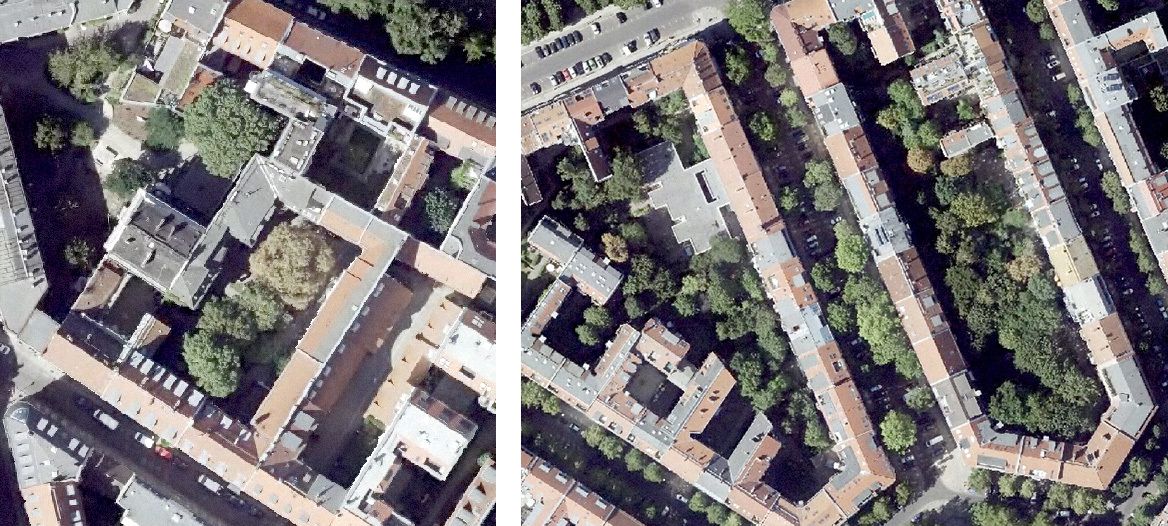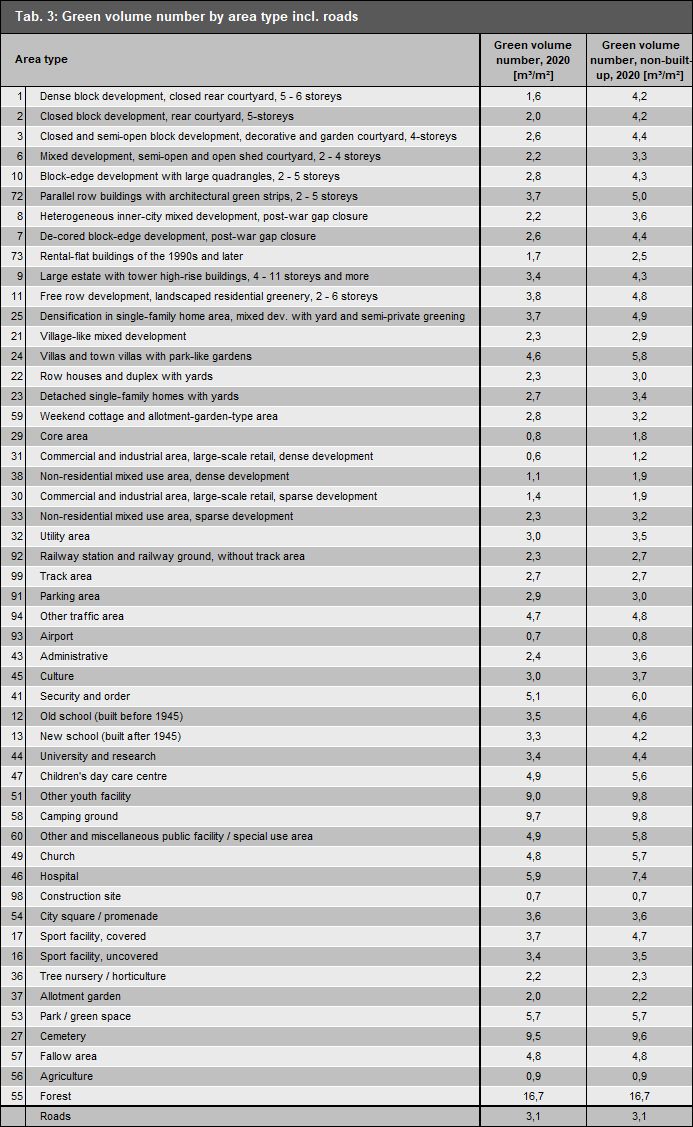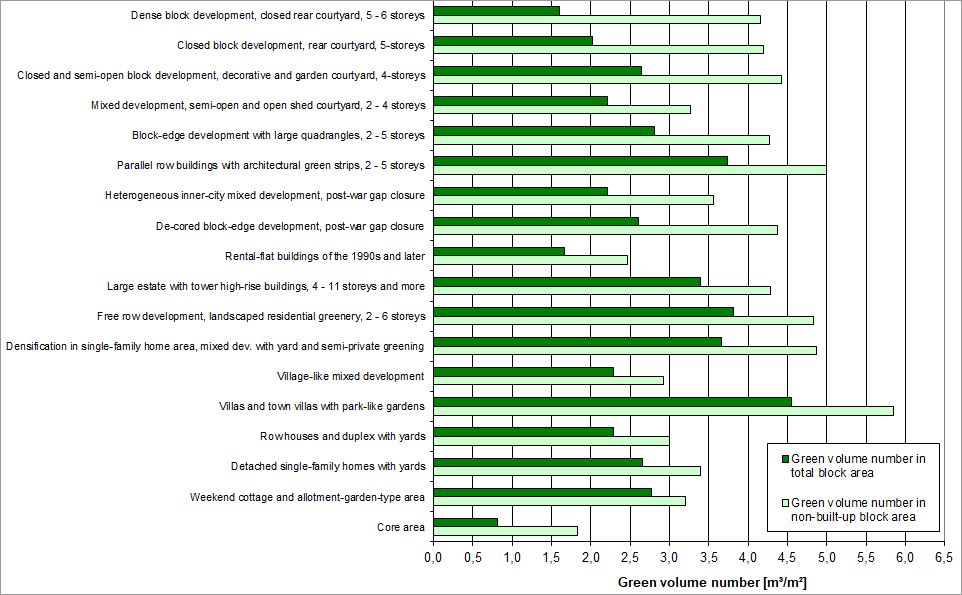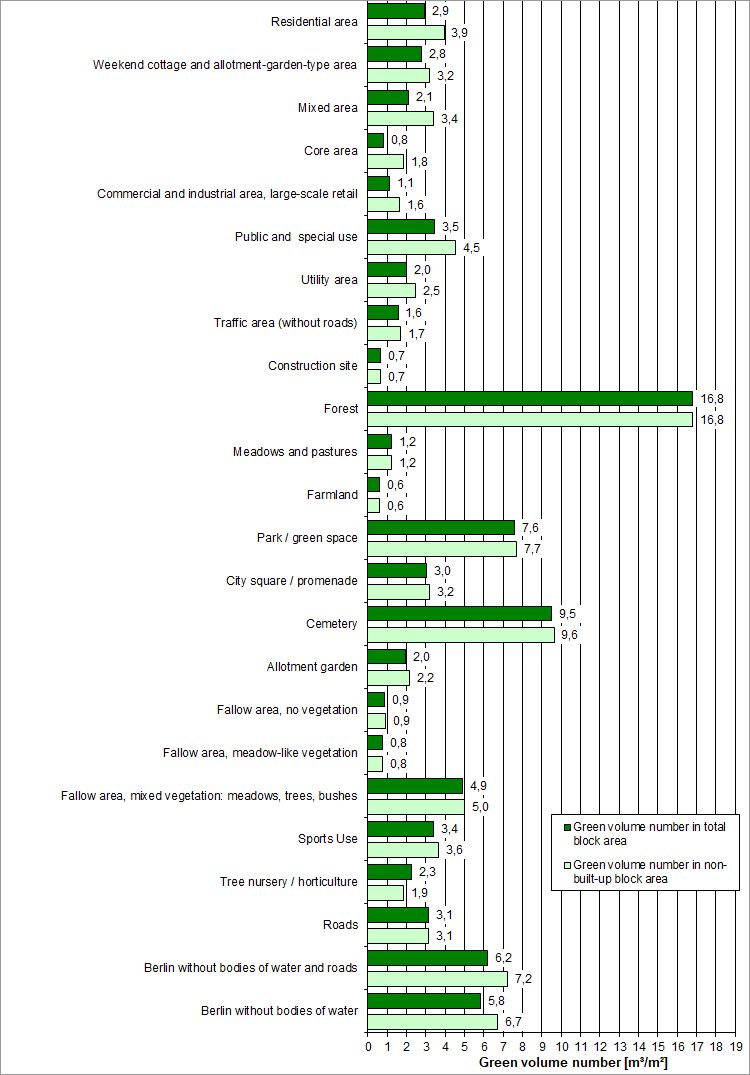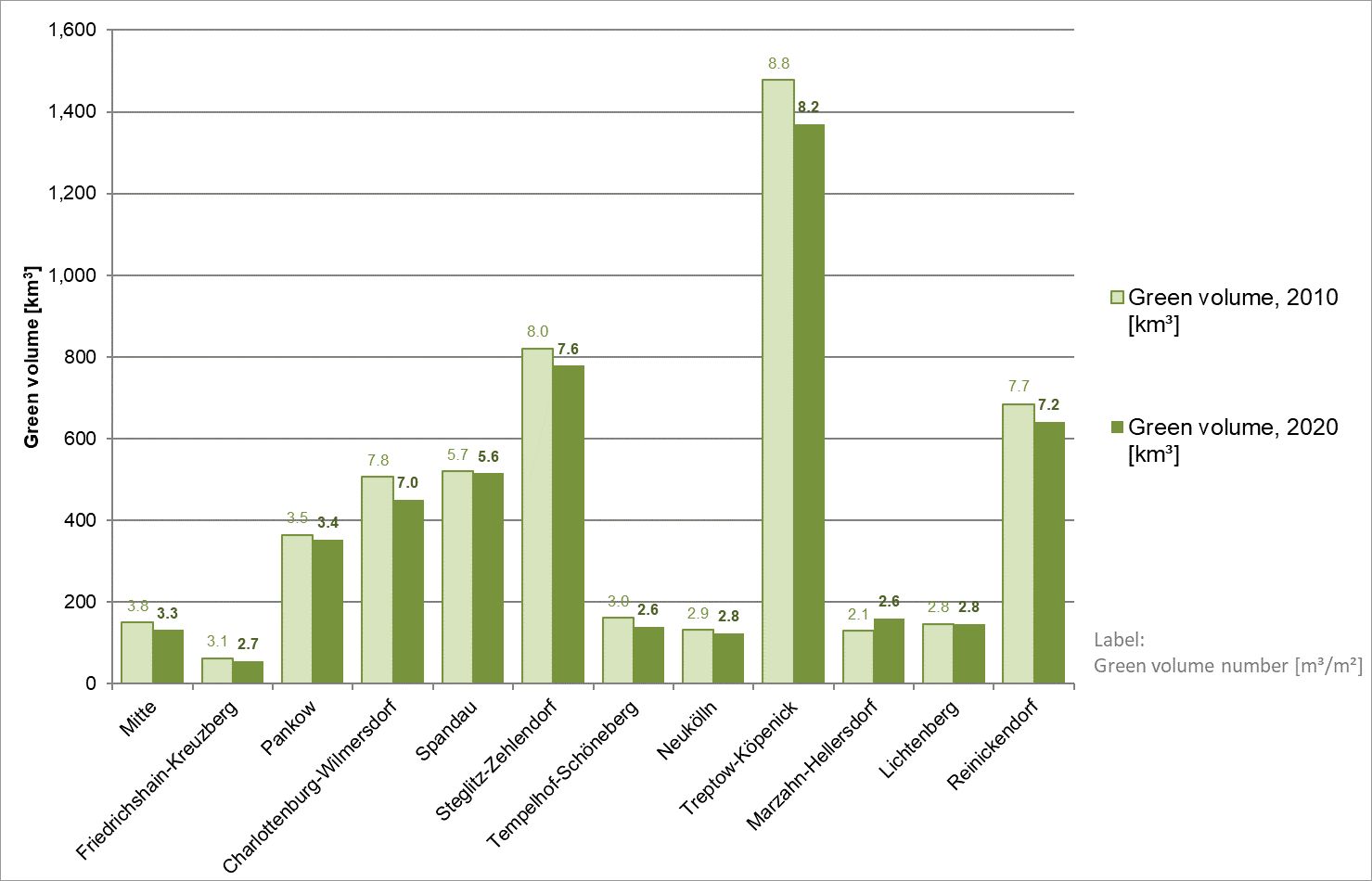Comparing the green volume numbers of 2010 and 2020 reveals an overall decrease of 290 km³ in the total green volume since 2010. A total loss of vegetation area of 2,648 ha was already described in the Map “Vegetation Heights” (06.10.2). Changes in the shares of green volume were inconsistent within the individual use groups. Forest areas recorded the largest loss of green volume with 174.5 km³. At the same time, the green volume number dropped from 17.9 m³/m² (2010) to 16.8 m³/m² (2020) in the forests. There does not seem to be a simple answer as to what caused this loss. Rather, it may be assumed that there were various influences at play at the same time. On the one hand, mature trees dying as a result of the dry summers may have been an influencing factor. On the other hand, consequences associated with human intervention, including the use of wood and the effects of the Mischwaldprogramm der Berliner Forsten (mixed forest programme of the Berlin Forests, only in German) to produce resistant forests with a large variety of species may have had a serious impact.
The built-up areas also displayed a substantial loss of green volume of 174.5 km³. This loss may be attributed to new construction activities and retrospective densification within built-up areas. These, in turn, lead to block (segment) areas with smaller shares of non-built-up, green spaces. Mature trees dying as a result of the dry summers and additional tree felling on private and public properties may also have contributed to this.
Similarly, “Road areas” suffered a loss of green volume of 16 km³. The reasons for this reduction lie both in a general decrease in the number of roadside trees (cf. SenUVK 2020) and in a serious deterioration in the condition of existing roadside trees due to pest infestation (cf. SenUVK 2021).
Conversely, “Other green and open spaces” recorded a slight increase in the green volume from 841.2 km³ to 870.3 km³. The reason behind this growth is spontaneous vegetation that has grown on fallow areas, increasing their green volume number from 3.9 m³/m² (2010) to 4.8 m³/m² (2020). All in all, however, this increase in green volume is mitigated by the loss of green volume of the “Cemetery areas”, which dropped from 10.4 m³/m² (2010, new) to 9.5 m³/m² (2020). This may also be attributed, in some parts, to a loss of mature trees in forest and park cemeteries caused by heat stress.
On closer inspection of the residential development at area type level, striking differences within the built-up area become evident. The green volume numbers of the total areas corresponding to residential block and block segment areas vary between 0.8 m³/m² for the area type “Core area” and up to 4.6 m³/m² for “Villas and town villas with park-like gardens” (cf. Table 3 and Figure 5).
Comparing the green volume numbers for non-built-up parts of residential block and block segment areas, however, the numbers for densely built-up area types also increase in some cases, which applies particularly to the following area types:
- “Dense block-edge development, closed rear courtyard, 5 – 6 storeys”,
- “Closed block development, rear courtyard (1870s-1918), 5-storeys”,
- “Closed and semi-open block development, decorative and garden courtyard (1870s-1918), 4-storeys” and
- “Block-edge development with large quadrangles (1920s-1940s), 2 – 5 storeys”.
the existing old tree stocks, which occupy a large volume on a relatively small area, play a key role here (cf. Figure 4).


